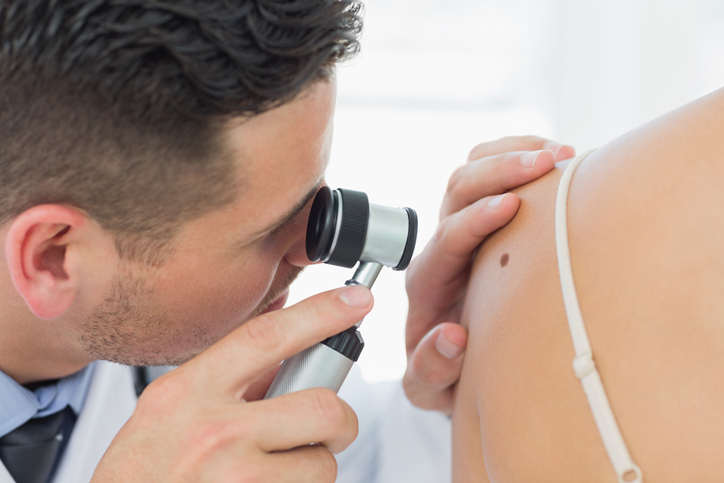This year in the United States, 5,550 men and 3,100 women are expected to die from melanoma, the most dangerous form of skin cancer. That is one death per hour. Melanoma is the most common form of cancer in young adults 25 to 29 years of age, and its incidence continues to rise.
As with nearly all forms of cancer, early detection maximizes the chances of survival.
Melanoma in its late stages is often terminal, but the survival rate approaches 100 percent for people whose cancer is detected early and treated before it spreads to other organs.
Spring is a great time to learn how to perform your first skin self-exam, attend a free skin cancer screening clinic as well as learn more about this potentially life-threatening form of skin cancer.
What is a Melanoma?
A melanoma is a malignant tumor originating from melanocytes, pigment-producing cells most commonly found in our skin. They can develop from an existing mole, but more often they occur by themselves. They can be almost any color including black, brown, blue and even white.
Who’s at Risk?
Everyone is at some risk of developing melanoma, but several factors significantly heighten one’s risk. Risk factors include:
- Family history: Having a first-degree relative with melanoma increases your chances of developing the disease by 50 percent.
- Personal history: Having one melanoma increases your chances of having a second. Also, any history of the more common types of skin cancer—basal and squamous cell carcinoma—increases your chances of being diagnosed with melanoma.
- Moles: The more moles you have, the greater your risk for melanoma.
- Sun exposure: Chronic sun damage, a history of childhood sunburns, and tanning bed use increase your melanoma risk.
- Skin type: People with lighter skin who burn easily are at greater risk. Nevertheless, melanoma can occur in all skin color types, including dark skin.
How To Do A Skin Self-Exam
Follow the steps below to find suspicious moles or skin lesions that a dermatologist should examine.
- Examine your entire body front and back in the mirror. Then look at your right and left sides with your arms raised.
- Bend elbows and look carefully at forearms, upper underarms and palms.
- Look at the backs of your legs and feet, the spaces between your toes, and on the soles of your feet.
- Examine the back of your neck and scalp with a hand mirror. Part hair for a closer look.
- Finally, check your back and buttocks with a hand mirror.
Source: American Academy of Dermatology
Melanoma: Recognizing The Signs
In examining moles and lesions on the skin, use the ‘ABCDEs’ and ‘Ugly Duckling’ Sign to identify possible melanomas.





